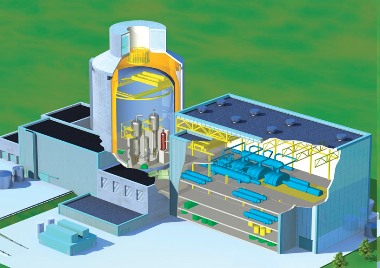More shield work on AP1000
16 October 2009
Westinghouse could suffer a setback in plans to deploy its AP1000 reactor after US regulators required more work on the shield building.
 |
| AP1000 |
The structure in question is the outside wall of the reactor building, designed to protect the main nuclear components of the power plant during events such as severe weather. It goes around the containment allowing for cooling by natural circulation of air and supporting a large water tank to enhance that in an emergency. It also provides an additional barrier for radiation.
The Nuclear Regulatory Commission (NRC) said that Westinghouse "has not demonstrated that certain structural components of the revised AP1000 shield building can withstand design basis loads." Modifications to the current design will be required, Westinghouse was told, as well as tests to show the new version of the building will meet requirements.
The NRC said that the impact on the design's review schedule would be established after it and Westinghouse had discussed plans to address the issues. Any impact on NRC reviews of utility applications to build and operate AP1000s would then be addressed. Some 14 of the reactors are planned in the USA with the first slated to come online in 2016.
Westinghouse said it had already begun some of the design work and had committed the necessary resources to "quickly and definitively address the NRC's concerns."
The AP1000 received design certification from the NRC in 2006, meaning that a utility could then apply to build. Westinghouse later submitted revisions to the certified design which it said would reduce cost and financial risk to buyers, afford extra protection against large aircraft crashes, improve instrumentation & control and finalise details such as pipe layouts.
Two AP1000s are under construction in China with two more contracted and many more to come. In the UK the design is undergoing the Generic Design Assessment process but no plans for construction have yet been made public.